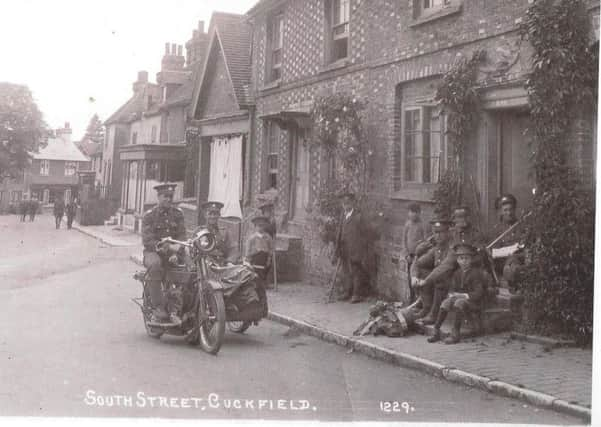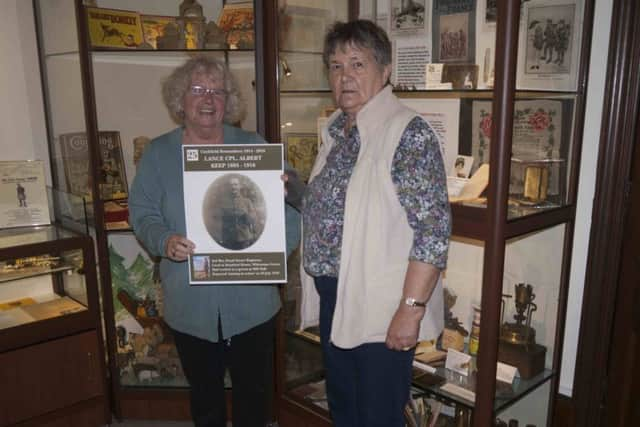Cuckfield pay tribute to the villages fallen WWI soldiers


The memory walk will cover 38 homes in which these men used to live, they will be marked with poster boards and photos.
The boards will be in place from October 29 until November 18 and we hope that schools, youth groups and families will follow the route and remember the impact those deaths had on the small community.
Advertisement
Hide AdAdvertisement
Hide Ad81 men died in all and the names of all those who went to war are on the board in the entrance of The Queen’s Hall.


The Memorial Walk map will be available as part of a Cuckfield Remembers Commemorative Programme available in the High Street at the sponsors: The White Harte, Cuckfield Bathrooms, Marcus Grimes, Cuckfield I Wear and The Rose and Crown who will also be displaying WWI photographs taken in the village.
Programmes will also be available in the Parish Office, Holy Trinity Church, the Baptist Chapel and the Museum. The Parish Office will be displaying photos of the VAD Hospital at the Queens Hall in WWI.
The programme will give information about events over Armistice time including a concert, drama, film show, tea dance and beacon lighting.
Advertisement
Hide AdAdvertisement
Hide AdAn exhibition to accompany these events ‘Peace at Last 1918 – Joy and Sorrow’ will run till Dec 15th at Cuckfield Museum.
Barbara Roger and Sue Parsons (pictured) have recently visited the museum to take part in the memory walk.
These women are granddaughters of Cuckfield soldier Albert Keep who was killed at the Somme in 1916 and are holding the poster which will stand outside Durnford House, Whitemans Green where Albert lived.
The memory walk is not only to remember those who were lost in world war I, but also to celebrate those who did return home and relive these moments.
Advertisement
Hide AdAdvertisement
Hide AdAs well as the walk throughout the village, the museum are displaying an array of historical items.
Within this display is a ‘welcome home dinner menu’ which was used for when the men returned back home. They had the option of every type of roast meat and Christmas puddings, and this was in April.
A braille watch which belonged to Alphaeus Arnold, who lost his sight whilst fighting in France. He was one of the first men to be admitted to St Dunstan’s, the charity which supported those with visual injuries.
There is a photo of a circle of Cuckfield women making gloves. One of these women was recently widow, May Botting who needed to support herself financially and worked with her mother, Mrs Wells at the glove factory.
Advertisement
Hide AdAdvertisement
Hide AdAnother photo that will be on display is a group picture of a group of men in Russia.
The museum had made a Russian connection in Cuckfield with two families involved in events surrounding the Russian Revolution of 1917.
Diana Giles’ grandfather, James O’Grady, was chairman of the National Federation of Trades Unions and a Labour MP. He went to Petrograd after the overthrow of the Czar in March 1917 to persuade the moderate revolutionary government to remain in the war.
Neville Blunden’s father, Joseph, falsified his age and was sent at the age of 17 to Russia during the civil war which followed the revolution of October 1917. He was supplying the White Russian cause and was awarded a medal bearing the Czar’s head.